For the last twelve years, The Woodland Trust has held an annual competition to select the Tree of the Year. The 2022 winner has just been announced and we are proud to note that the winning tree is a venerable Yew at Waverley Abbey near Farnham – a destination within the Surrey Hills that the Society has visited on a number of occasions.
As you can see from the various photos, it is a beautiful tree with roots that sprawl out above ground before plunging into the earth. Not only is it a wonderful tree but it fits so well into the landscape and ruins of Waverley Abbey – the first Cistercian Monastery established in England
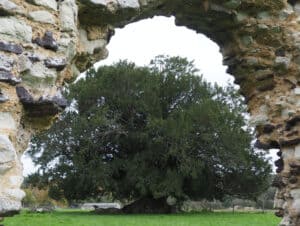 The Yew won with an impressive 16% of the vote. In second place was The Portal Tree Rowan in Midlothian which took 11% of the vote. Third place went to Derbyshire’s Layering Horse Chestnut, with 10% of the votes.
The Yew won with an impressive 16% of the vote. In second place was The Portal Tree Rowan in Midlothian which took 11% of the vote. Third place went to Derbyshire’s Layering Horse Chestnut, with 10% of the votes.
This national Tree of The Year competition aims to highlight how vital trees are for our landscapes and our lives whilst celebrating ancient trees that have withstood the test of time. Each is a constant safe haven for wildlife in a changing and sometimes disconnected landscape. The Waverley Abbey Yew proved to be a wonderful example of how important trees are. Its multi-stemmed form, dotted with holes, crevices and areas of decay, is an invaluable habitat for wildlife.
Having won the UK vote, this tree now becomes the national entry for European Tree of the Year 2023. Now that really would be an accolade!
More details may be found on the Woodland Trust website.


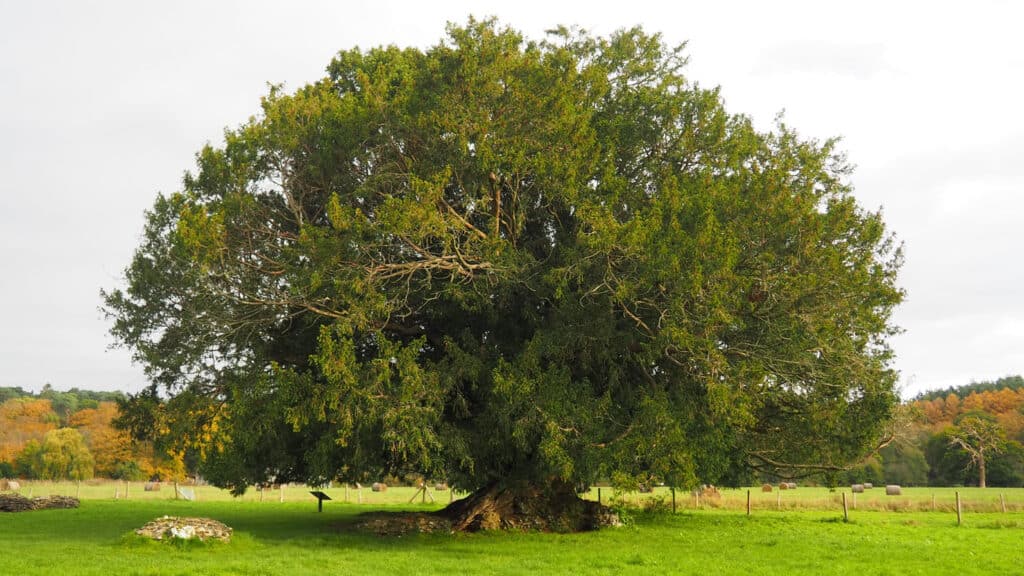
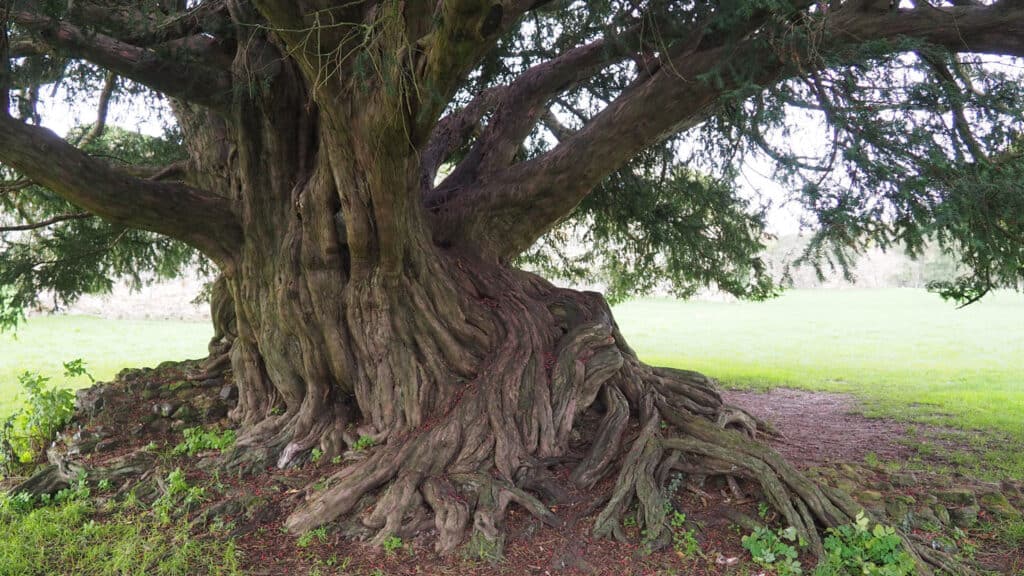
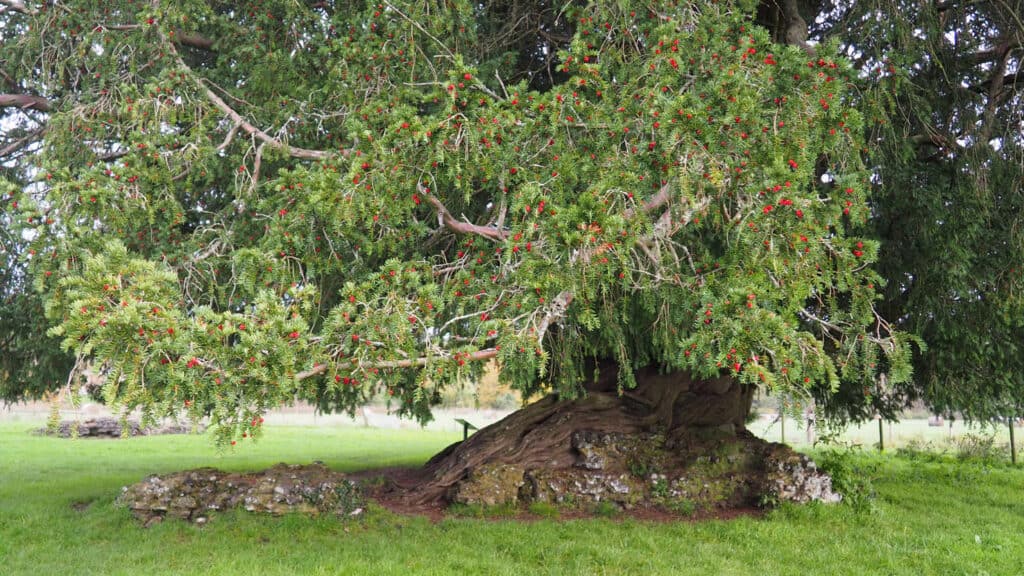

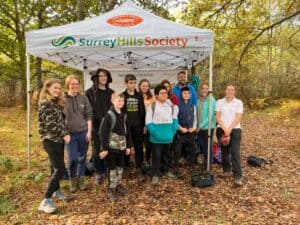
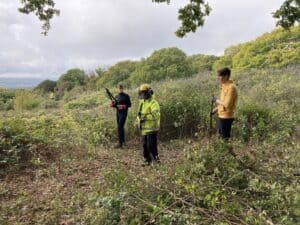 The Growth Team comprises of a group of adults with learning disabilities who carry out important conservation and access work across Surrey. They have been working up at Newlands Corner, to clear encroaching bramble and scrub from the grassland to encourage its restoration but also to help open up the viewpoint and create more places for people to sit.
The Growth Team comprises of a group of adults with learning disabilities who carry out important conservation and access work across Surrey. They have been working up at Newlands Corner, to clear encroaching bramble and scrub from the grassland to encourage its restoration but also to help open up the viewpoint and create more places for people to sit.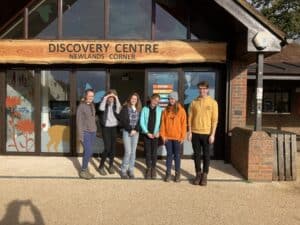
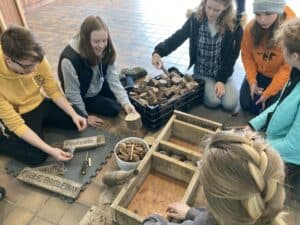
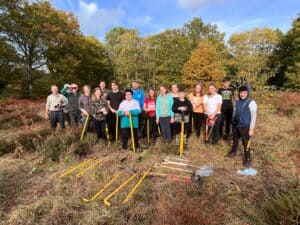
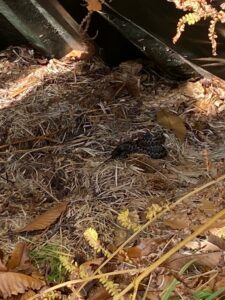

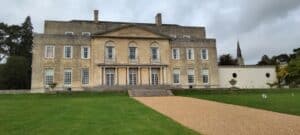
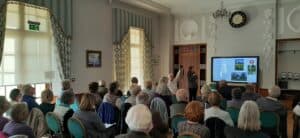 The Park and Garden’s Manager, Dan Ryan then gave a short talk about Capability Brown with particular reference to his design of the historic Gatton Park landscaped gardens.
The Park and Garden’s Manager, Dan Ryan then gave a short talk about Capability Brown with particular reference to his design of the historic Gatton Park landscaped gardens.
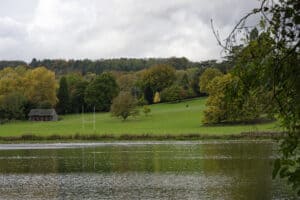
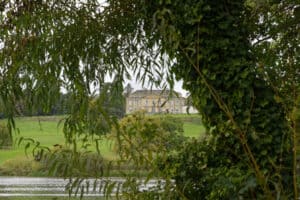
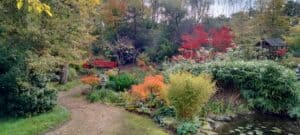 Walking through the park we went down to the Japanese Garden to see the changes that have recently been made, including new steps to improve access. The rock garden has also been recently renovated and it is around that area that there is a beautiful display of snowdrops in February.
Walking through the park we went down to the Japanese Garden to see the changes that have recently been made, including new steps to improve access. The rock garden has also been recently renovated and it is around that area that there is a beautiful display of snowdrops in February.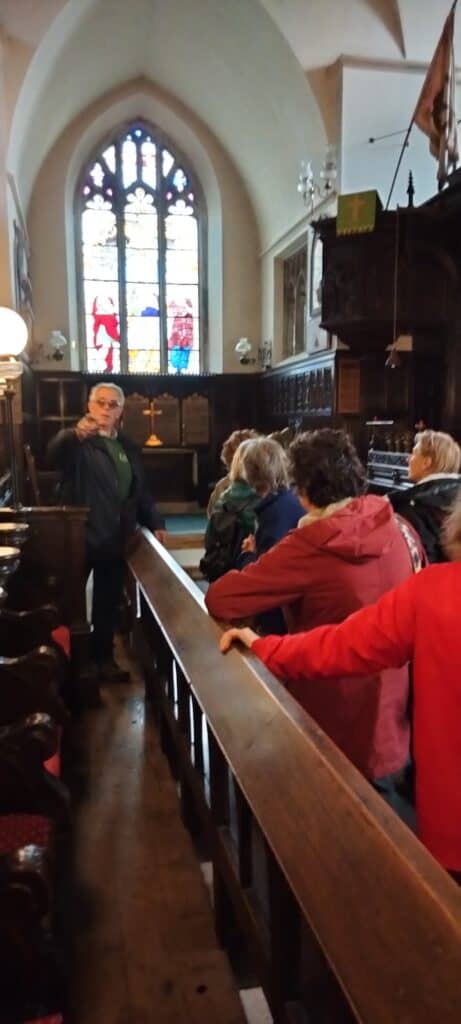
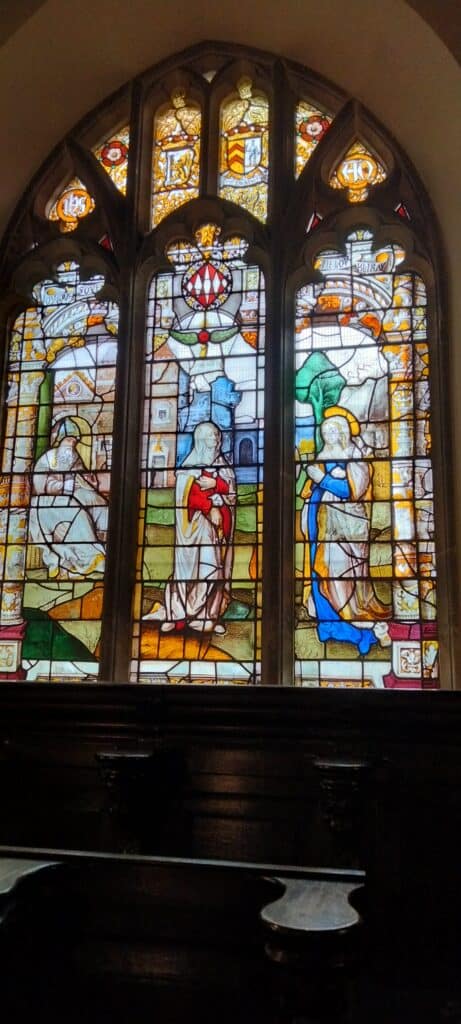

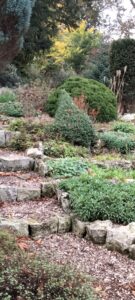

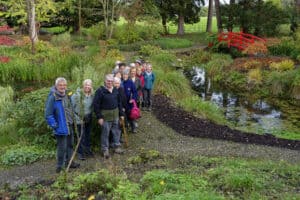

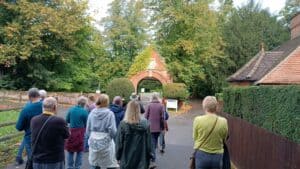

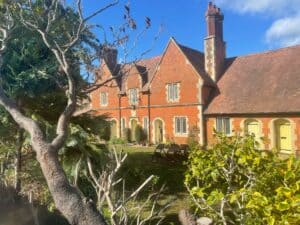

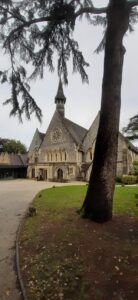



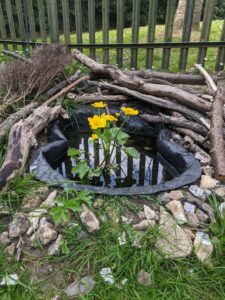
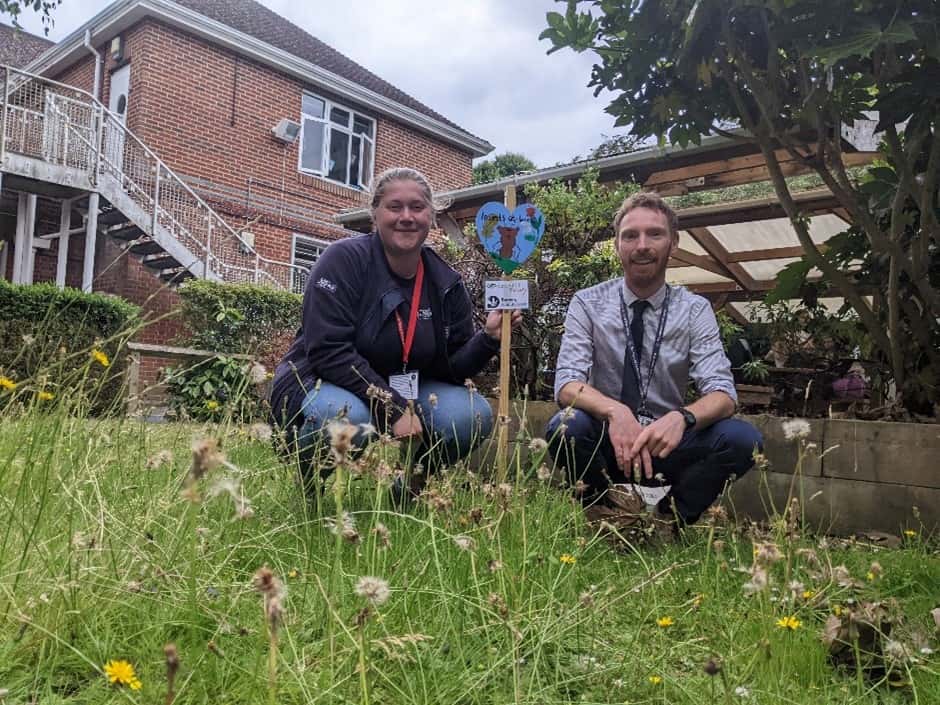
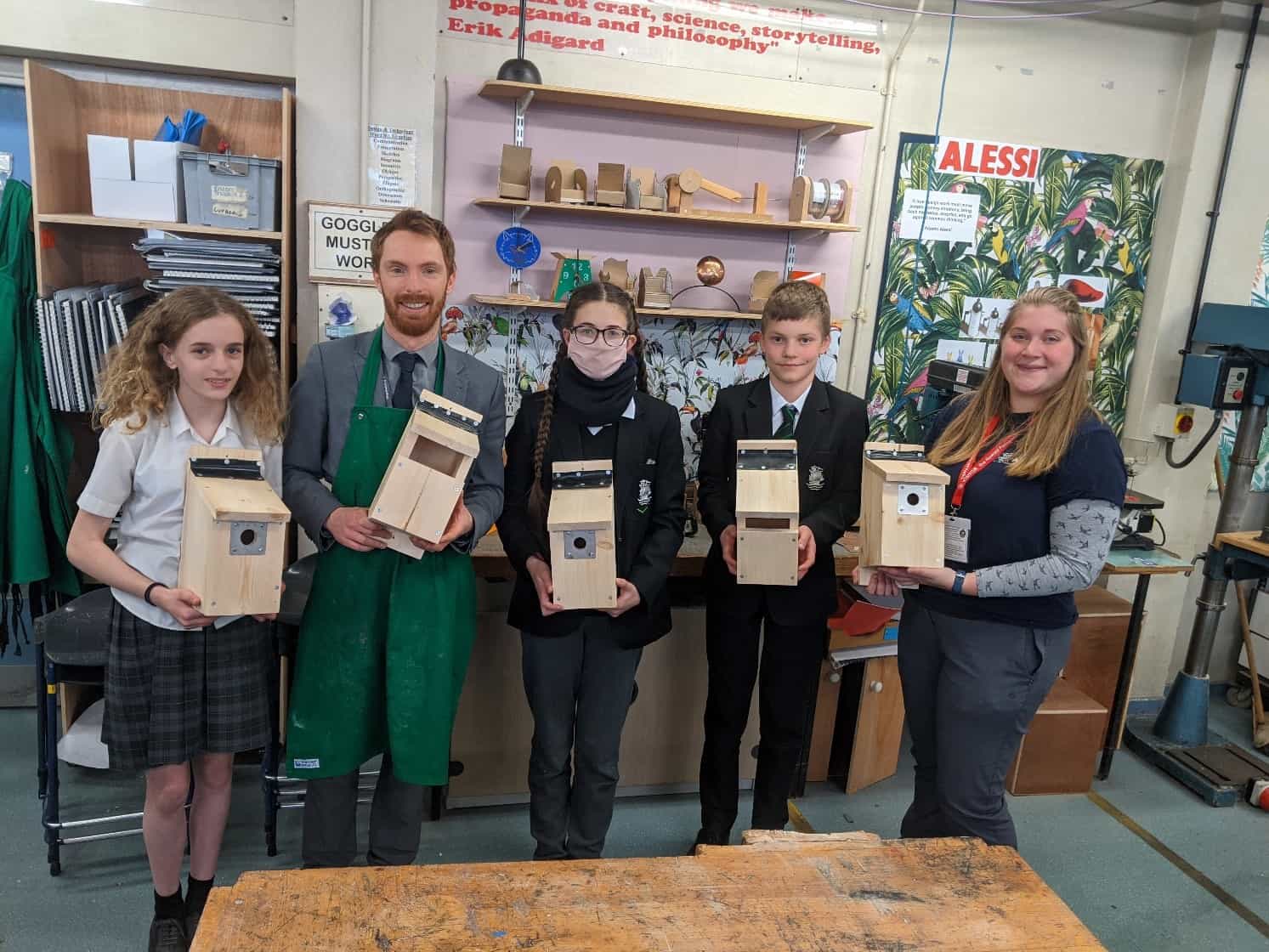
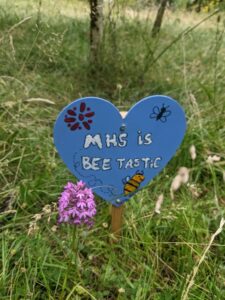
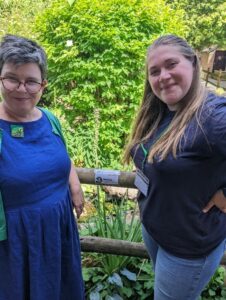 Year 2 planted pollinator friendly seeds, which they looked after for the summer term. The hope is that these will be planted in a new pollinator friendly flower bed!
Year 2 planted pollinator friendly seeds, which they looked after for the summer term. The hope is that these will be planted in a new pollinator friendly flower bed!

 From the outset the Surrey Hills Society responded promptly, providing all the information that we requested, and offered to put together a day that factored in everyone’s needs. On the day itself we had a welcome briefing from the Chairman of the Society before making our way to the footpaths of the Surrey Hills. And wow – what a view!
From the outset the Surrey Hills Society responded promptly, providing all the information that we requested, and offered to put together a day that factored in everyone’s needs. On the day itself we had a welcome briefing from the Chairman of the Society before making our way to the footpaths of the Surrey Hills. And wow – what a view!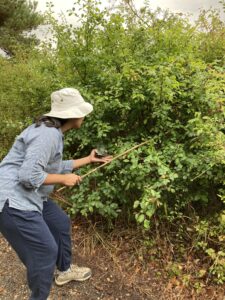
 Split into two groups, our first task was to take part in the Great British Hedgerow Survey. Equipped with guides, diagrams and cane sticks to help us with accurate measuring, we analysed sections of hedgerows, identifying plant varieties, measuring height and depth, noting down any large gaps and answering multiple questions to help guide future conservation work. The Surrey Hills team explained how important the hedgerows are for food, shelter and access routes, with many species wholly dependant on them for their survival. We learnt a great deal about the difference types of species, both plants and animals, that make up a seemingly common hedgerow.
Split into two groups, our first task was to take part in the Great British Hedgerow Survey. Equipped with guides, diagrams and cane sticks to help us with accurate measuring, we analysed sections of hedgerows, identifying plant varieties, measuring height and depth, noting down any large gaps and answering multiple questions to help guide future conservation work. The Surrey Hills team explained how important the hedgerows are for food, shelter and access routes, with many species wholly dependant on them for their survival. We learnt a great deal about the difference types of species, both plants and animals, that make up a seemingly common hedgerow.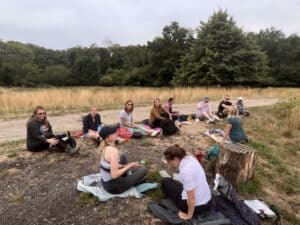
 Some people may mistakenly believe those managing the nation’s motorways wouldn’t be the first to appreciate the nature and beauty of our landscapes, but that misconception could not be further from the truth. Indeed, it has long been a key priority for National Highways to manage the balance between the safety and convenience of those using our roads with the preservation of the landscapes they pass through. This trip highlighted the need for us to continue to prioritise that important work.
Some people may mistakenly believe those managing the nation’s motorways wouldn’t be the first to appreciate the nature and beauty of our landscapes, but that misconception could not be further from the truth. Indeed, it has long been a key priority for National Highways to manage the balance between the safety and convenience of those using our roads with the preservation of the landscapes they pass through. This trip highlighted the need for us to continue to prioritise that important work.
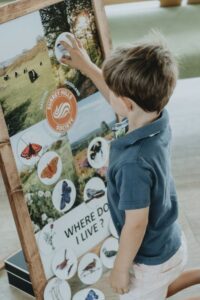
 There were lots of fun activities for the 19 children who attended including the ‘Where do I live’ magnetic board game supplied by Christa and Ash.
There were lots of fun activities for the 19 children who attended including the ‘Where do I live’ magnetic board game supplied by Christa and Ash.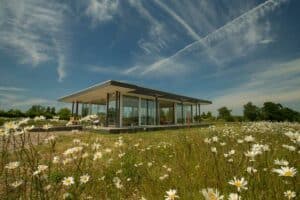 The children could then occupy themselves back at the spacious Pavilion with panoramic views of the reserve. They could make Pom Pom sensory balls, Salt Jars, stone painting and friendship bracelets. The Surrey Hills Society provided colouring pages of animals and a guide book of what is available in the Surrey Hills.
The children could then occupy themselves back at the spacious Pavilion with panoramic views of the reserve. They could make Pom Pom sensory balls, Salt Jars, stone painting and friendship bracelets. The Surrey Hills Society provided colouring pages of animals and a guide book of what is available in the Surrey Hills.

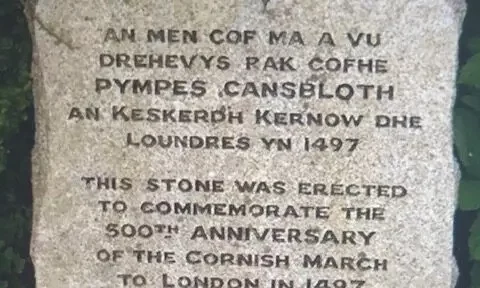
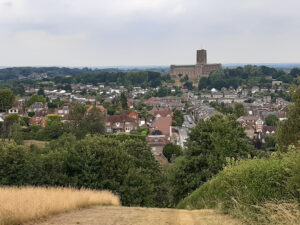
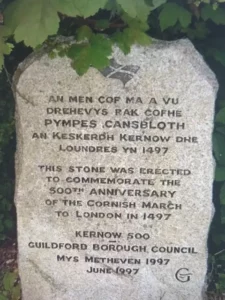 In 1997, a commemorative march named Keskerdh Kernow (Cornish: “Cornwall marches on”) retraced the original route of the rebels from St. Keverne to Blackheath to celebrate the 500th anniversary of the Cornish Rebellion. A statue depicting the Cornish leaders was unveiled at St. Keverne and commemorative plaques were unveiled at Guildford and on Blackheath.
In 1997, a commemorative march named Keskerdh Kernow (Cornish: “Cornwall marches on”) retraced the original route of the rebels from St. Keverne to Blackheath to celebrate the 500th anniversary of the Cornish Rebellion. A statue depicting the Cornish leaders was unveiled at St. Keverne and commemorative plaques were unveiled at Guildford and on Blackheath.

